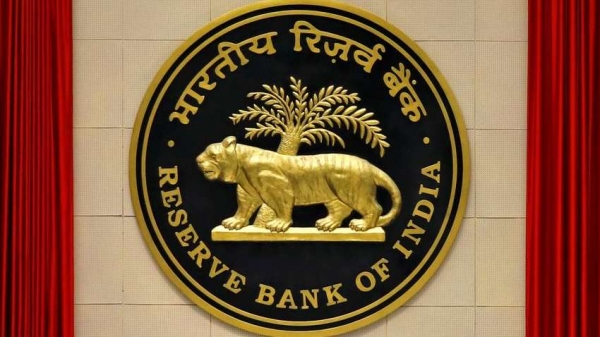Five things to watch out for from RBI policy today
Price Action: The MPC is likely to keep interest rates unchanged despite continued rising inflation and strong rebound from the recovery. SAK's poll showed that
- by B2B Desk 2020-12-04 05:47:53
The Governor of the Reserve Bank of India, Shaktikantha Das, will announce the MPC's policy decision on Friday at 10 a.m. M., followed by a press conference at 12 p.m. M. Here are the five things to keep in mind.
Price Action: The MPC is likely to keep interest rates unchanged despite continued rising inflation and strong rebound from the recovery. SAK's poll showed that 10 economists were unanimous in their opinion that the commission would keep the buyback rate at 4% along with its accommodative policy stance. All surveyed economists expect the Reserve Bank of India to remain on hold and watch for the remainder of the fiscal year, in contrast to their previous expectations of a rate cut before the end of the year. While they do not anticipate a rate cut, these economists expect the MPC to maintain cautious guidance for the remaining year. The MPC stated in its policy in October that it would maintain its consensual position for as long as necessary until the next fiscal year.
Growth: The latest GDP figure showed the Indian economy rebounding sharply in the second quarter from a record 24% drop in the previous quarter. GDP contracted 7.5% in the July-September quarter, below the central bank's 8.6% forecast according to the now-projected model, in which economic conditions are monitored in real time to make forecasts. Therefore, the market expects the Reserve Bank of India to revise its growth forecast for the current fiscal year to around -8.5% from -9.5% previously. However, they expect the Reserve Bank of India (RBI) to take a measured tone, indicating uncertainty about the elasticity of demand after the Christmas season and downside risks from the increase in cases.

Inflation: Inflation has surprised to the upside and has remained above the upper tolerance level of 6% for seven consecutive months. Supply-side factors such as non-seasonal rains, labor shortages, high prices for services, high commodity prices, and high taxes contributed to the rise in the headline and core inflation rate. . So the market expects the Reserve Bank of India (RBI) to revise its inflation forecast for the current fiscal year. Nomura expects a revision of more than 1 percentage point (pp) to 5.5-6.9% in the second half of fiscal year 21 (from 4.5-5.4%) and a new forecast for the first half of fiscal year 22 of 4.2-4.8% . However, vegetable prices started to decline, likely leading to lower headline inflation in November and more pronounced in December. However, other cost pressures on non-food items such as transportation, telecommunications, appliances, etc. they will continue to keep inflation above the 4% target.
MPC voting pattern: it will be interesting to observe the voting pattern of the MPC members. In the latter policy, all members except Jayanth R. Varma voted to continue the accommodative stance for an extended period, or at least until the next fiscal year, in order to permanently jumpstart growth and ensure inflation stays within of the goal. Verma argued that the cause of the steeper yield curve in India was due to the formulation of future direction by the monetary policy committee. The market will be watching with interest the views of MPC members on the liquidity position, growth and inflation of the RBI.
Also Read: Tata Group is reportedly nearing a deal to buy BigBasket in a grocery coup

POPULAR POSTS
Loan EMIs to Drop as RBI Slashes Repo Rate - Full MPC December 2025 Highlights
by Shan, 2025-12-05 11:49:44
Zoho Mail vs Gmail (2025): Which Email Platform Is Best for Businesses, Startups, and Students?
by Shan, 2025-10-09 12:17:26
PM Modi Launches GST Bachat Utsav: Lower Taxes, More Savings for Every Indian Household
by Shan, 2025-09-24 12:20:59
$100K H-1B Visa Fee Explained: Trump’s New Rule, Clarifications & Impact on Indian Tech Workers
by Shan, 2025-09-22 10:11:03
India-US Trade Deal Soon? Chief US Negotiator Arrives in Delhi as Talks Set to Begin Tomorrow
by Shan, 2025-09-15 11:54:28
Modi Meets Xi: Trump’s Tariffs, Strategic Autonomy, and the Future of Asia’s Power Balance
by Shan, 2025-09-03 06:40:06
Google Claims Gemini AI Uses Just ‘Five Drops of Water’ Per Prompt, Sparks Debate
by Shan, 2025-08-22 12:34:27
RECENTLY PUBLISHED

Pine Labs IPO 2025: Listing Date, Grey Market Premium, and Expert Outlook
- by Shan, 2025-11-05 09:57:07

The Agentic Revolution: Why Salesforce Is Betting Its Future on AI Agents
- by Shan, 2025-11-05 10:29:23

Top 10 Insurance Companies in India 2026: Life, Health, and General Insurance Leaders Explained
- by Shan, 2025-10-30 10:06:42

OpenAI Offers ChatGPT Go Free in India: What’s Behind This Big AI Giveaway?
- by Shan, 2025-10-28 12:19:11

Best Silver Investment Platforms for 2025: From CFDs to Digital Vaults Explained
- by Shan, 2025-10-23 12:22:46





 Subscribe now
Subscribe now 